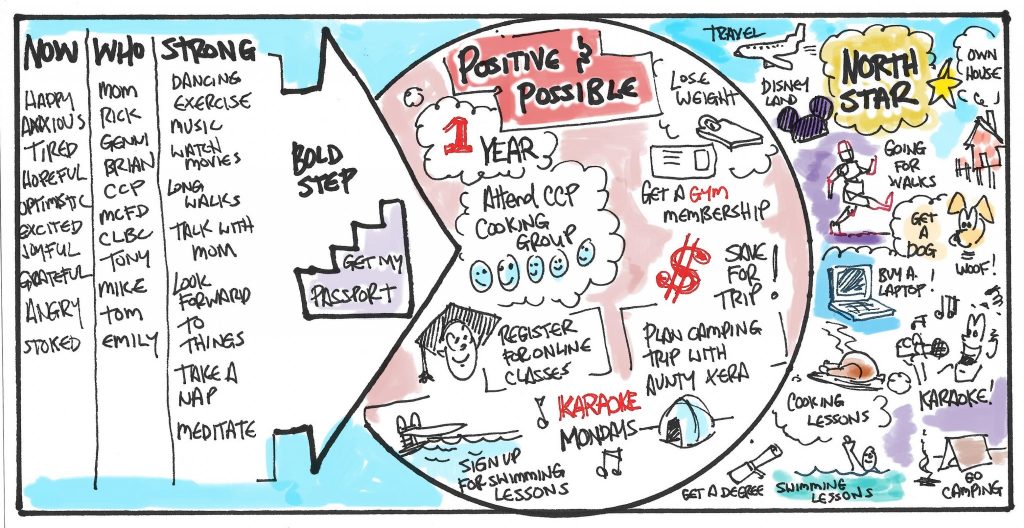Social Role Valorization (SRV) is a set of principles used to help make positive changes in our lives. The use of SRV benefits those who are often disadvantaged because of social status. SRV is often used when planning ways to support children and adults with impairments. SRV can also be used to impact the social situation of any given person or group of people.
SRV is the belief that the good things life has to offer are available to people who have valued social roles. People who have very few valued social roles have a harder time obtaining the good things of life. For this reason, having valued social roles are key to obtaining the “Good Life”.
Person Centered Planning shares a common foundation with Social Role Valorization. Both focus on increasing individual choice. Both focus on avoiding labels that are devaluing to a person. Both focus on building positive relationships. Both help to identify individualized supports based on a positive, possible vision.
Person Centered planning offers a variety of “tools” that are action oriented. (Values’ focus is on using the Charting the Life Course platform). All planning focuses on a person (or a group) who has the desire to design a vision for a positive and possible future. An essential part of each planning process is crafting a rich and full vision of the life we want for ourselves.
Merriam-Webster defines a vision as “the act or power of imagination”. When we apply vision to the future, we are creating a mental picture or image that guides us to direct our next steps.
Robert Fritz stated, “It’s not what the vision is, it’s what the vision does”. Our vision serves as a road map to attaining our Best Life!
I share this bit of information to help focus our thoughts on why a vision is important for everyone! Having a vision provides us with something to look forward to and to work towards. Having a vision provides us with a reason to keep going, even when the road ahead gets bumpy. Having a vision gives meaning and purpose to our goal setting processes.
Creating a vision of the future is a process that starts with identifying what is most important to us. When creating a vision, we should do so without sparing the details! The vision should be rich with valued social roles. The first step in creating a vision is imagining and describing our “Best Life”.
The PATH is another planning that tool uses the North Star to create a vision for the future. Other planning methods encourage us to “Dream Big” without judgement. Letting our imagination run wild is yet another way to help us create a vision for the future.

Regardless of the planning method used, a good way to get started with creating a life vision is to ask ourselves this simple question, “What would my Best Life look like in 20 years?”. When answering this question, it is important to focus only on creating the vision. We stifle our creativity when we get bogged down in the details of how this will happen. Set those thoughts aside for now. If 20 years seems unattainable, focus on the next 5 years.
Getting started with building a vision can be overwhelming. Here are a few prompt questions to get us started:
– Where am I? Where do I live? (The more specific detail, the better)
– What does my ideal day look like?
– What am I doing?
– Who am I with? How do I feel about them?
– What have I already accomplished in my life?
– What do I look like? How do I feel about that?
– How do I feel? What is my state of mind?
– Does my best life make me smile? Does it warm my heart and make it sing? (If the answer to this question is “no”, dream bigger and dig deeper until it does!)
Realizing your vision is achievable by taking the first step. Then take the next step and the next step after that. Once you craft your vision, you can use any planning process to guide your next steps. For now, it’s important to get started! Create a vision of your future! Set your goals for how to get there! Take the first steps! All these actions can help your Best Life become a reality!
